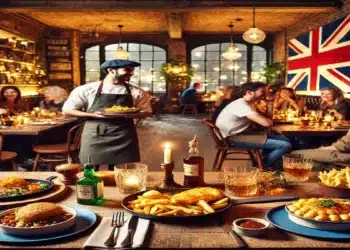It is a food that is part of the daily life of 84% of Italians. Someone gives up for fear of extra pounds. What to do to “save” the line
Whether cereals, wholemeal or white is the most popular food on our tables. 84% of Italians habitually consume bread, but in smaller quantities than the European average: every year there are about 41 kg per capita, while in Romania 88 kg, in Germany 80 kg, in Holland 57 kg, in Poland 52 kg, in Spain 47 kg, in France 44 kilograms, in the United Kingdom 43 kg. The preferences in favour of wholemeal and organic also change. These are some of the data that emerged from the online survey conducted by Italmopa (Associazione Industriali Mugnai d’Italia) to analyze new trends in bread consumption in Italy, increasingly driven by social channels, chosen as a source of information by 61% of respondents, while 33% rely on the advice of friends and relatives, 22% on more traditional channels (TV/radio/newspapers) and 11% on testimonial statements.
Fear of getting fat
According to the Italmopa survey, 84% of Italians habitually consume bread, while 16% of respondents said they do not eat it or only occasionally. Those who do without it do so to follow a light finger because it is believed to make them fat. But is that the case? “There is a growing trend towards carbophobia, which sees carbohydrates as the main culprits of weight gain, insulin resistance and related diseases,” explains Andrea Ghiselli, research manager of Crea-Alimenti e Nutrizione. “The Guidelines for a healthy diet, on the other hand, based on the Mediterranean diet, recommend a greater consumption of cereals, especially wholegrain. Fruits, vegetables, whole grains and legumes are in fact the groups of foods, in addition to water, on which to focus more for a better diet”.
Why is it good for you?
The fact is that every day we are bombarded with information about food or diet, but often this information is false or not scientifically based. “Bread is often the subject of fake news, while for us nutritionists it is the basis of our diet and the Mediterranean dietary model,” explains Elisabetta Bernardi, nutritionist biologist. “Bread, white or wholemeal, is a necessary food in a balanced diet because of its high content of complex carbohydrates, and the energy they bring that is similar for both types of bread. It is not a particular food that makes you gain or lose weight, but the intake of a diet with a higher caloric intake than individual needs”.
Wholegrain and multi-cereal: a full-fibre
Among those who habitually consume bread, white flour is chosen by 72% of voters, while those who declare to consume bread made of wholemeal flour are 39%, a percentage, however, in constant growth compared to the past. Lower, but in any case significant, are the percentages – respectively 28% and 24% – of those who also consume bread made from durum wheat semolina or multigrain flour.
But what are their nutritional characteristics? “Multigrain bread – explains Ghiselli – has more fibre than white bread because it generally uses a higher percentage of wholemeal, rye or oat flour. Fibre is important because it increases the sense of satiety, improves the intestinal transit and the composition of the intestinal microbiota and helps us to keep cholesterol and glycaemia under control. Moreover, for the same weight, the more fibre there is, the fewer carbohydrates there are”. Pay attention, however, to the ingredients because often to make a wholemeal product pleasant and give it a good consistency, a little extra fat and salt are added. What about gluten-free bread? “For those with celiac disease, it is essential, but for others, it can be a problem because gluten increases the protein content, reduces carbohydrates and interferes with the glycemic index. Also, when using gluten-free flour, you have to use additives or other ingredients to make it soft. So, if you are not celiac, it is better to eat white or wholemeal bread, perhaps in smaller quantities”.
Organic flours: just a fad?
As regards some of the most popular types, 24% of those interviewed said they would like to increase their consumption of bread made from organic flours, 19% from old grain flours and 18% from stone-ground meals. Beyond fashion, what are the advantages of choosing organic food? “It is a bread produced with flour that comes from wheat – or other cereals – grown according to the dictates of organic farming and therefore does not contain synthetic substances with pesticide, fertilizer or herbicide functions and must not come from GMO crops. But from the nutritional point of view – clarifies Ghiselli – there are no differences”.
A “hidden source” of salt
The new Guidelines for a healthy diet reaffirm that bread can be part of a balanced diet and that it is not true that preferring crackers or crackers to food helps to lose weight; in fact, the caloric content of cookies and crackers are much higher than that of bread. Be careful, however, not to exaggerate with quantities because this food represents one of the primary sources of salt (30%). “Bread and baked goods such as crackers and breadsticks – explains Ghiselli – make us reach a share of 42% of the salt we consume: more than 75% of what is allowed per day and, even if these foods are not commonly considered as possible sources of salt, instead they contain more salt than we think”. Also, bread and baked goods are an essential source of salt precisely because we consume them every day and in higher quantities than, for example, cold cuts, cheese, canned fish or French fries, which contain more salt, but in general are consumed less frequently and in most cases in smaller portions.
How much to consume
Whatever choice we make, how much bread can we consume every day? “Consumption is always subjective – answers the expert – because it depends on individual needs and also on what else we eat during the day. In the Guidelines, we have indicated for a requirement of two thousand calories, which is the average requirement of Italians, 3-4 portions of 50 grams per day that must, however, be balanced with the amount of pasta or potatoes that we eat”.


























